READY TO GET STARTED?
REQUEST A FREE ESTIMATE
Fill out the form below or call (888) 466-7849 for a free, no-obligation estimate.
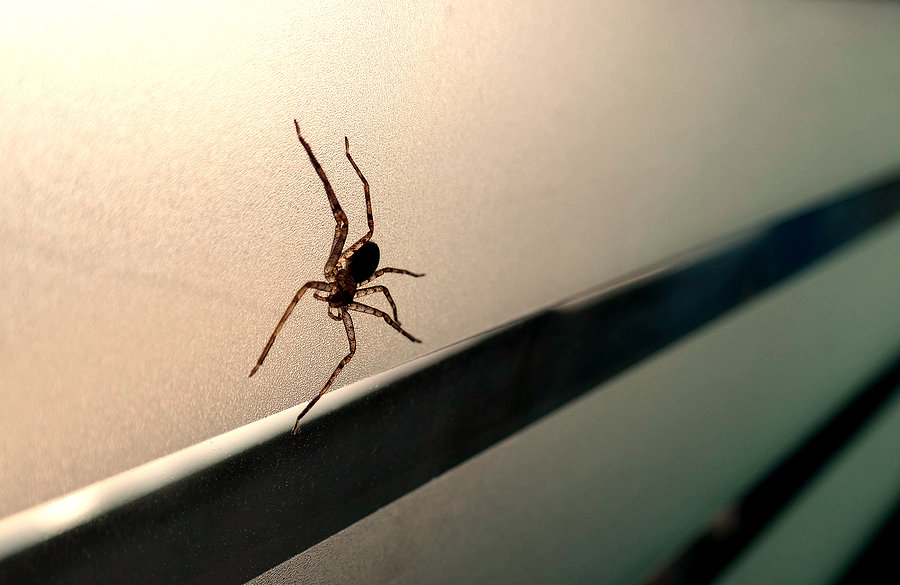
It’s a common myth that spiders come into our homes to overwinter until spring. In actuality, they most likely were already there to begin with. These household pests are more active in fall and early winter for two main reasons: they are preparing winter and the upcoming scarcity of food and they are mating and in search of a partner to reproduce with.
House spiders take up residence in your home year-round. Spiders can be beneficial to have around as a form of natural pest control as they eat other insects (even other spiders) found around your house.
One exception to this is the brown recluse spider. They will seek warmth and food indoors in the winter by hiding out in dark, unused areas of your home. Brown recluses are identified by the distinct violin-shaped mark on their back. They will bite and are considered harmful to humans.
You can prevent spiders in your home by:
If you have an issue with spiders, contact your local pest control company for an inspection.
When Does Swarming Season Begin?
Should I Worry About Cockroaches?
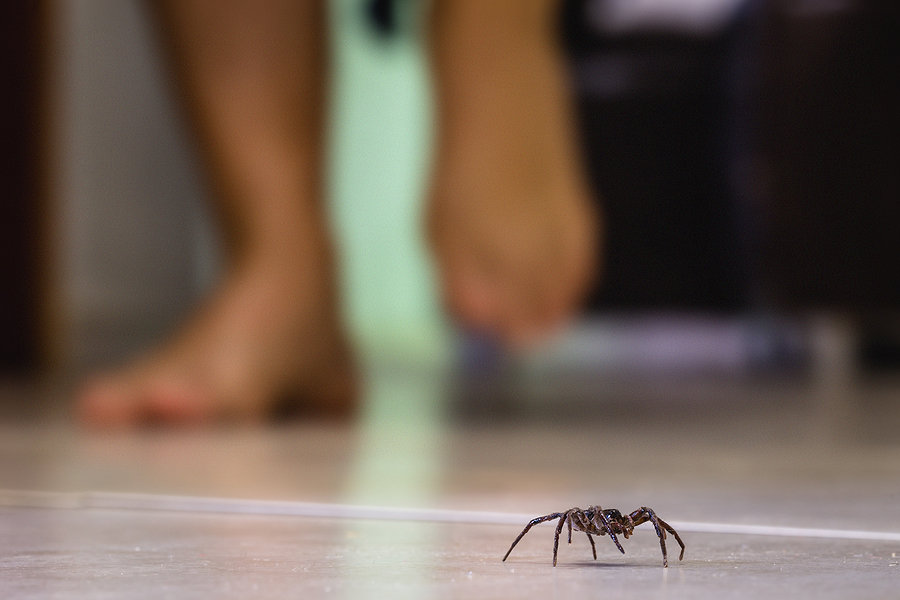
Spider sightings tend to increase when the weather cools off. While most spiders prefer to live outdoors, a few will make their way inside in search of food and water. Most spider species also mate in the fall, increasing the numbers we see as they go in search of their partner. Young spiders are born in the spring, taking the summer to grow and mature. By fall they are bigger, venturing out and starting to build their webs. All of these factors combine to increase the number of spider sightings we see near the end of the year.
There are many types of spiders common to this area, some venomous but most harmless. Here are 9 of the most common spiders in Georgia to look out for this fall.
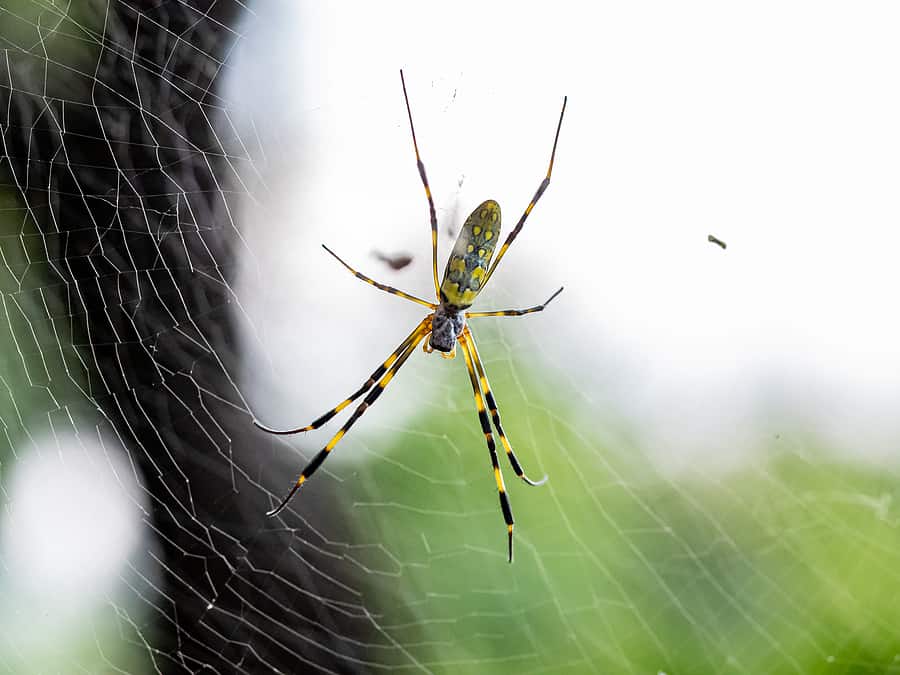
Joro spiders are a non-native species originating in Asia that were first spotted in Georgia in 2014. Since then they have started to expand their population throughout the southeastern United States. Joro spider eggs hatch in late spring, with sightings as early as May. They will build their webs anywhere they can find, including decks, porches, houses, plants, landscaping, etc. They are larger than most other spider species in the US. Females can measure up to 4″ in length with males only reaching about 1/4″ in size. Their colors vary – males are usually brown while females can be blue-gray or yellow with red markings on their abdomen and black legs with yellow bands. They are commonly found on the edges of woods and around homes. They are not usually seen indoors and their bites are rare. There is no research to show that Joro spiders are dangerous to humans.
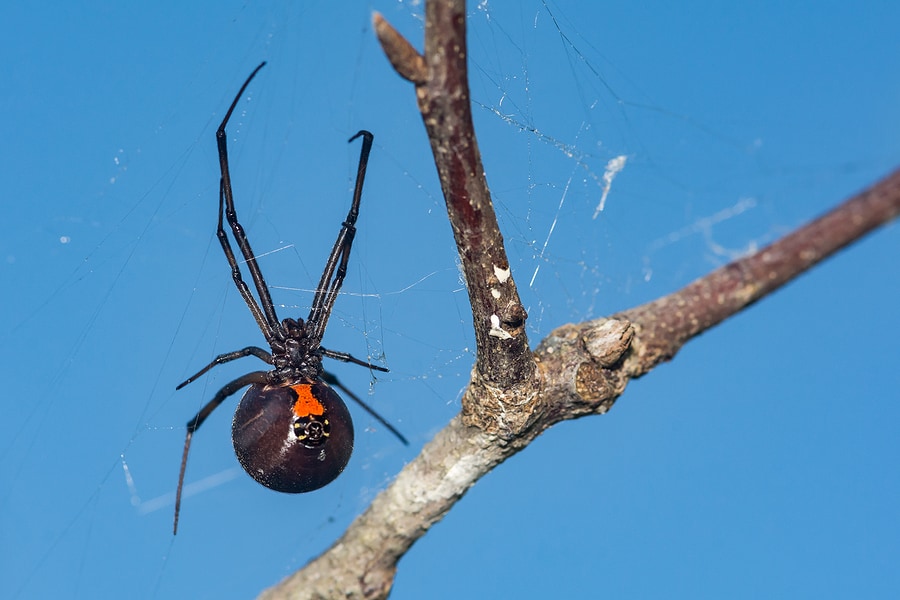
The black widow is one of the few structure-invading species of spiders in our area. Their fangs are big enough to penetrate human skin and their venom is powerful enough to cause side effects in humans. In fact, they are the most venomous spider in North America. Antivenom for their bites does exist. Female black widows grow to lengths of 3/4″ while males are about half that size. They are one of the easiest types of spiders to spot with black bodies and distinctive red hourglass markings on the underside of their abdomen. They have very round body shapes. These spiders can be found indoors and outdoors, preferring protected, sheltered areas to live in. They are most active at night, spinning webs to catch their prey in. Outside they can be found around decks, in barns and outbuildings, under rocks, or in woodpiles. Inside they can usually be found in areas that aren’t disturbed or used frequently, such as garages, basements, closets, and crawlspaces.
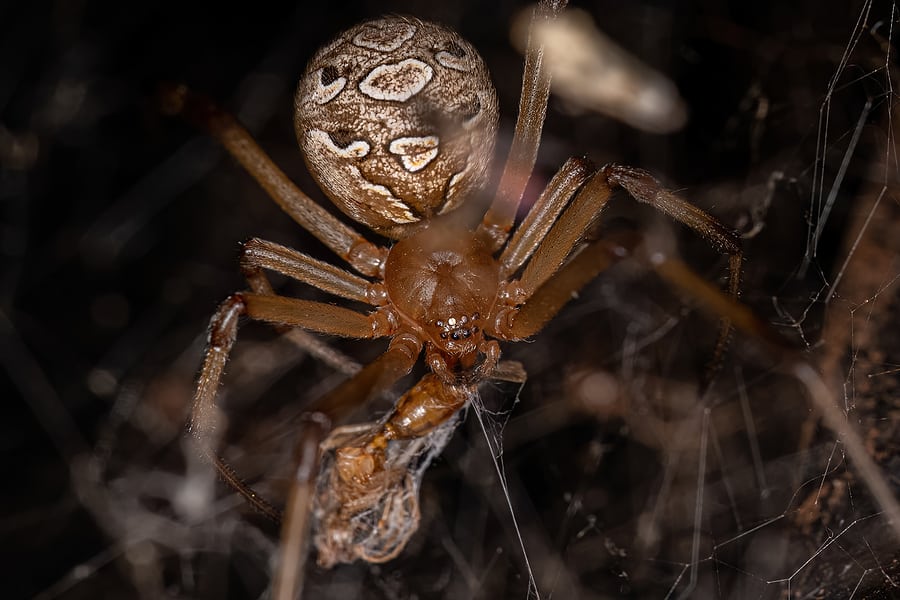
Brown widow spiders are another non-native species, although can now be found throughout the southern and western United States. Bites from the brown widow aren’t as potent as those from their black widow cousins and don’t cause nearly as bad of side effects. Only brown widow spiders bite. Brown widows also prefer undisturbed areas to live in but can often be found in garages and basements, gardens, on patio furniture, on mailboxes, on outdoor toys, and in storage closets. Female brown widows grow to about 1/2″ long while males are about half this size. Both males and females are brown in color with tan and black legs. They also have the hourglass marking like black widows, but theirs are orange in color.
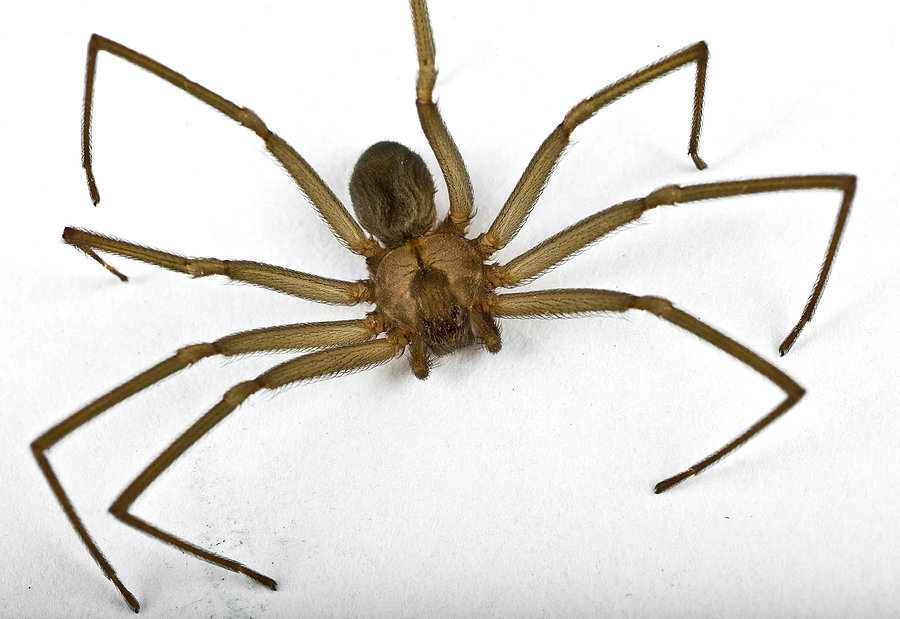
Brown recluse spiders are commonly found in the southeastern and midwestern United States. They are also easily identifiable by the distinctive markings found on their bodies. These spiders are known for “secretive” behaviors, preferring to hide in warm, dark, dry habitats. They are commonly found in woodpiles, basements, and closets, especially in old shoes that aren’t worn often. They will bite, with symptoms taking up to 3 hours to show up afterwards. Brown recluses range from 1/4″ to 1/2″ in length. They are tan to dark brown in color with a dark fiddle-shaped marking on their back.
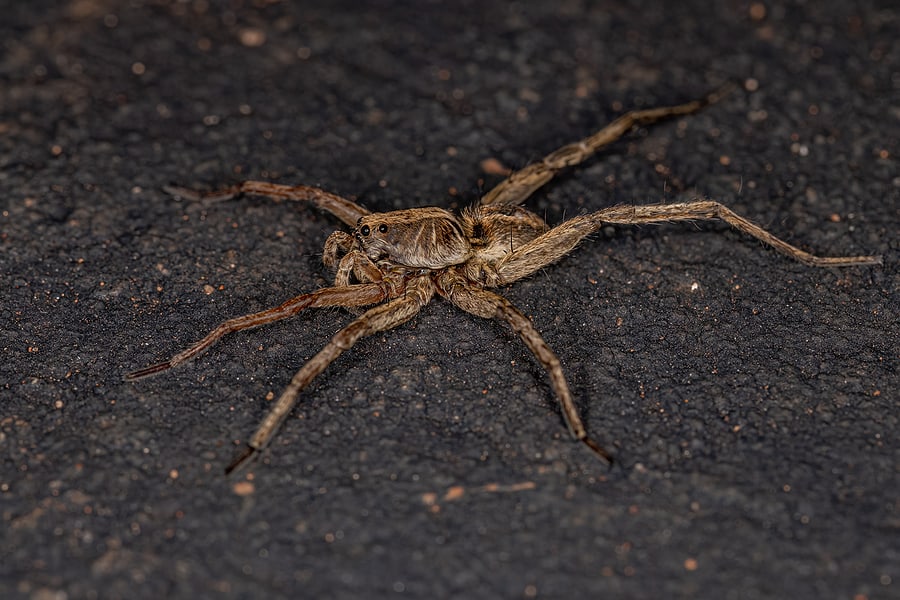
Wolf spiders are another common species you may see this fall. These spiders don’t use webs to catch prey; instead they hunt their prey, utilizing their speed to catch them. There are over 100 species in the US and Canada. Female wolf spiders grow from 3/8″ to 1-3/8″ in length while males range from 1/4″ to 3/4″. They are usually dark brown or yellow with striped markings on their legs. They are also very hairy. Wolf spiders hunt at night and hide out during the day. Once inside, they usually stay at lower levels and are often spotted in the floor along walls and under furniture. Outside they are found in woodpiles, under rocks, and other sheltered areas of landscaping. They can be beneficial to have around because they eat other pests that can cause problems around your home. They can bite but it is extremely rare.
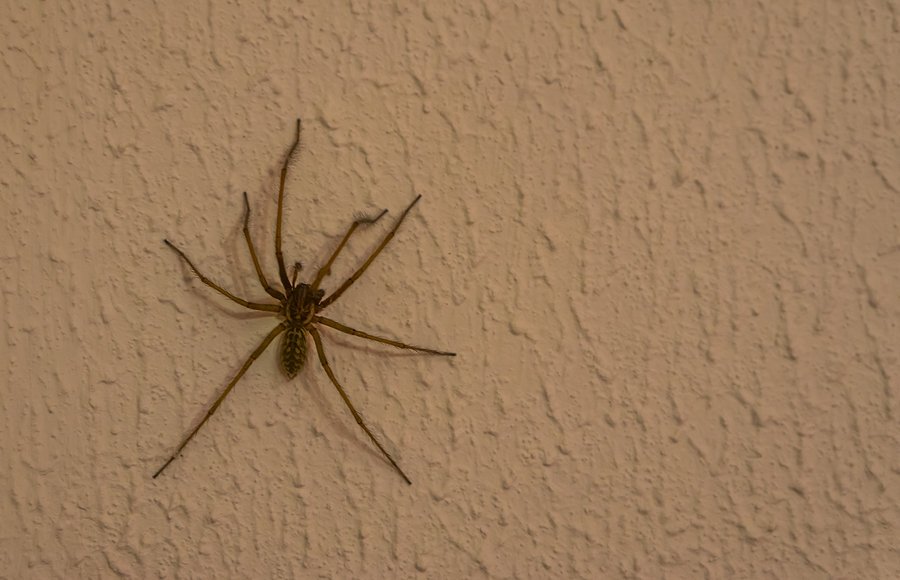
The common house spider gets its name from the fact that it is commonly found inside homes. These spiders are commonly found worldwide. They don’t pose a threat to humans and are more of a nuisance pest. Their webs in your home are the biggest issue they cause. Female house spiders grow from 3/16″ to 5/16″ in length while males range from 1/8″ to 3/16″. They are yellowish-brown in color with dirty white abdomens and dark stripes that meet at an angle.
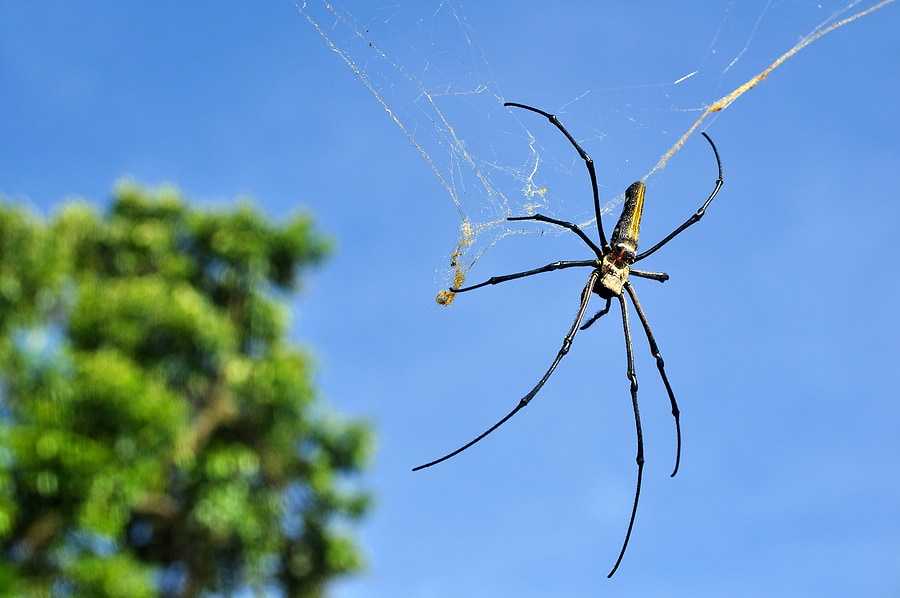
Orb weaver spiders are named for the orb-shaped webs they create. There are over 2800 species of these spiders worldwide. Adults range in size from 1/2″ to 1″. Their coloring varies greatly among species; they are mostly reddish-brown to gray but some varieties are a vibrant yellow color. Because there is such variation among species, the best way to identify an orb weaver is by it’s large, circular, wagon-wheel shaped web. Orb weavers don’t pose any threats to humans but their large webs can be problematic around your home.
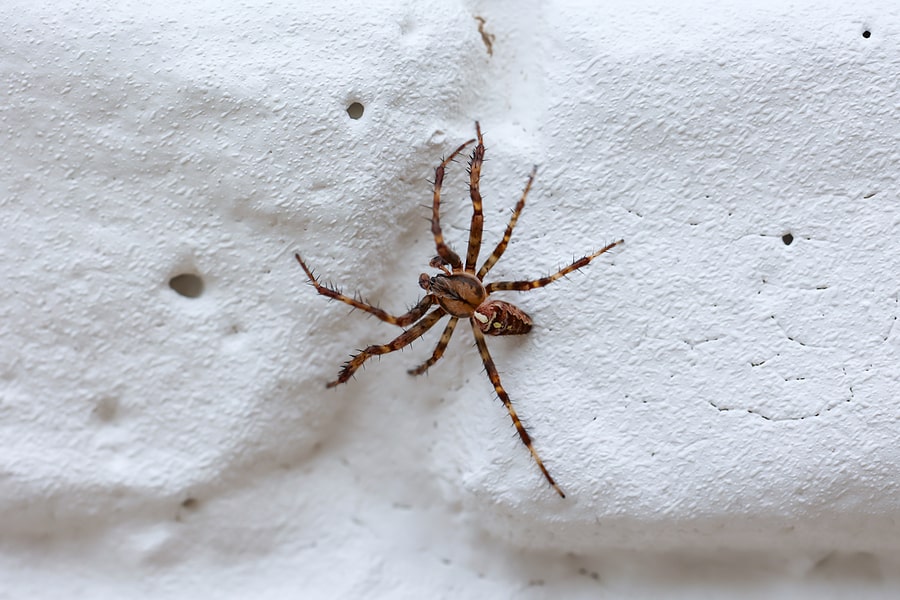
The crevice spider, also known as the southern house spider, are commonly found in the southeastern United States. They are often mistaken for brown recluse spiders. They range in size from 1/2″ to 3/4″. Males are usually brown or amber in color while females are black or gray and resemble tarantulas. They prefer to build their webs at higher elevations and are usually found on the outside of houses, outbuildings, and barns. They are known to crawl across anything in their path, including humans! They do not pose a threat to humans, however.
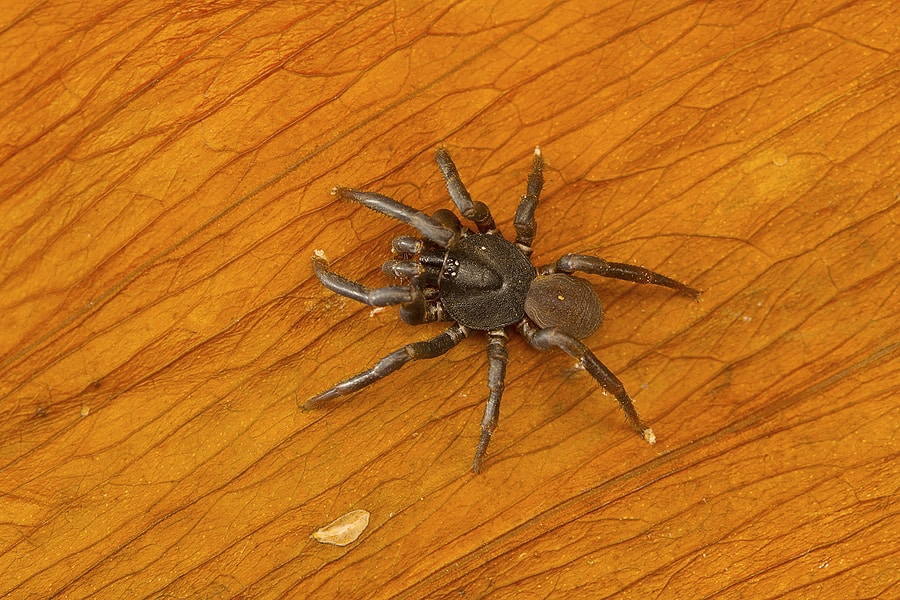
The trapdoor spider is a large, hairy spider that can range in color from yellowish brown to reddish brown to black. They have powerful jaws and sharp fangs. Trapdoor spiders get their name from the burrows they construct with a cork-like trapdoor made of soil, vegetation and silk. They spend most of their lives underground and usually hunt at night. Trapdoor spiders are not aggressive and, in fact, are often timid when confronted. They can bite but this is rare. They do not pose a significant threat to humans.
Once you’ve identified the spider(s) you have around your home, the next step is preventing them. You can prevent spiders by:
Fall Spider Identification Guide
American Cockroaches: How To Identify and Prevent
Are Mosquitoes Still Active in the Fall?
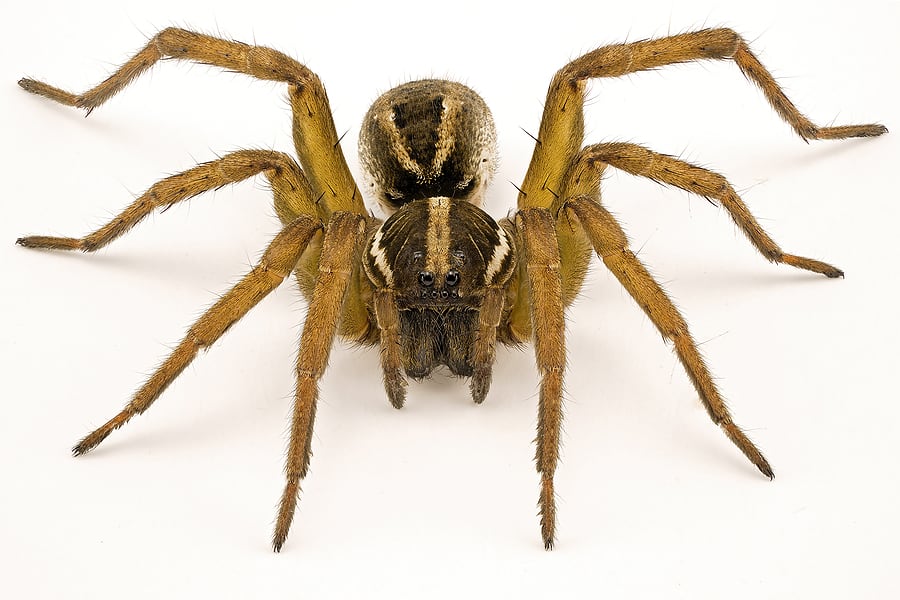
Creepy, crawly, and usually unwanted in our homes, spiders will often infest, looking for a nice place to inhabit. Most spiders that homeowners come across are harmless, but it’s always a good idea to stay on top of the spiders in your area to help prevent them. Check out our list of the top 3 common spiders you can find in Bonita Springs.
Black widows are one of the most venomous spiders in North America. These spiders are shiny black, with the female displaying a red hourglass-shaped mark on the underside of the abdomen. You can find black widow spiders outdoors under rocks, boards, or even in or around old buildings. These spiders tend to hunt by day and hide at night in their web. Luckily, they are not aggressive, and their bites only occur because of accidental contact. If bitten, common symptoms include redness, swelling at the site of the bite, nausea, and sometimes paralysis.
Wolf spiders are fairly large and hairy with a pattern of black, gray, and brown coloring. While they often frighten people with their looks, they are non-venomous and will only bite if provoked. These creatures do not spin webs to catch their prey but instead, hunt at night or wait to ambush while hiding under debris or burrowing. You can usually find these spiders on the ground, where they can camouflage their hairy bodies under leaf litter, rocks, and logs. If they find their way indoors, they like to stay close to the floor and are active in dim light.
One of the main types of venomous spiders in Bonita Springs is the brown widow. These spiders are slightly smaller than the black widow, grey to brown in color, and have a yellow hourglass marking under the abdomen. Brown widows are often found under rocks and logs but can adapt to human environments too. If they find their way inside, you can often find them in empty containers, entryway corners, under eaves, in cluttered storage closets, or any area that has been undisturbed for a long period. These spiders bite in self-defense, causing symptoms including swelling, nausea, vomiting, and high blood pressure.
To avoid these spiders entering your home, implement the following spider prevention tips:

Orb weaver spiders, or orb weavers, are a group of spiders named for their ability to produce round, orb-like webs. They make up the family Araneidae, one of the most diverse groups of arachnids in terms of both size and appearance. Despite their differences, they all have one thing in common: their ability to create large, majestic webs. These webs are circular in shape with grids similar to the spokes of a wheel. Some webs can even measure up to 3 feet in diameter. Let’s take an in depth look to learn all you need to know about orb weavers.
Orb weavers have body types similar to other spiders with 8 legs; 2 body parts (a cephalothorax and abdomen), and chelicera (mouthparts that look like fangs). They range in size from 1.5 to 3 cm. Some are brightly colored, while others are brown or gray. They have large abdomens and hairy legs.
Orb weavers are typically nocturnal and will often build or repair their webs at night. They do not hunt or wander for their food. Instead, they utilize their expansive web making skills to catch their prey. They will usually sit in their webs after they are built waiting for prey to become ensnared. Sometimes they will hide nearby and leave a trigger line of silk connected to the web. The vibrations from the prey run down the line and alert them. They will then bite and paralyze their prey and wrap it in silk to save for dinner later. Orb weavers are most commonly seen in late summer and early fall.
An orb weaver’s diet usually consists of small insects like moths, wasps, beetles, flies, and mosquitoes. Larger spiders will also eat small frogs and hummingbirds.
Orb weavers will take up residence where there is an abundance of prey for them to eat. They can often be found around outdoor lights, tall grass, weeds, fences, bushes, and walls. They can be found in any environment including gardens, grasslands, and cities. Orb weavers are found on every continent except Antarctica and in the Arctic. There are 2800 species worldwide and 180 species in North America.
Prevention is not necessary with orb weavers unless their web is constructed in an inconvenient area or an area with high human traffic. In fact, they can be beneficial to have around as they help keep other pests under control around your home. They don’t cause structural damage and they rarely bite (only if threatened and they cannot escape). Their bite has been compared to a bee sting. You can reduce the chances of having orb weavers around by:
If you have a problem with orb weavers or any other pests, contact your local pest control company for an evaluation and treatment plan.
3 Ways You’re Letting Ants Inside Your Home
How to Get Rid of Ants Outside of Your Home
7 Natural Ways to Keep Snakes Away
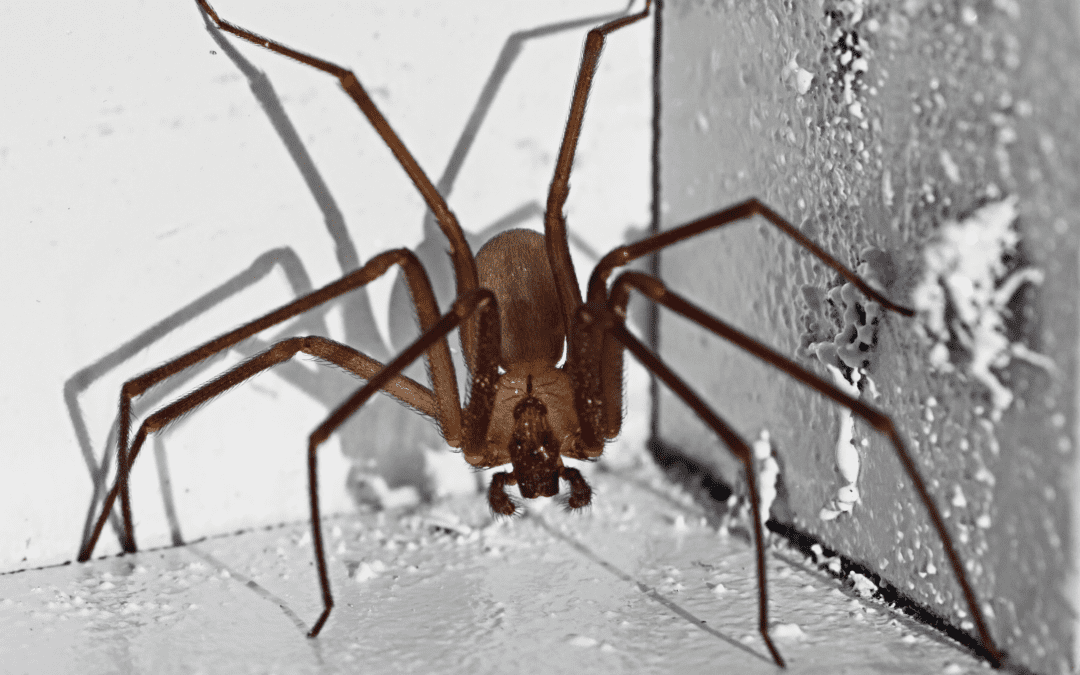
Encountering spiders isn’t on everyone’s list of daily things to do. The good news is that the chance of encountering a spider that is harmful to you is slim, but it’s still possible. A common one that you want to avoid is the brown recluse spider. How can you identify the brown recluse compared to other, less harmful varieties of brown spiders? Read below to learn more about these feared spiders and how you can prevent them!
The brown recluse is ¼” to ¾” in size and some can grow larger in size. They are typically light to medium brown and have markings on their backs, with a black violin-like shape pointing to the rear of the spider.
The brown recluse is known as a recluse for a reason; they don’t tend to make it known they are nearby. These spiders will typically seek out environments that are warm, dark, and dry.
This can include an array of places, such as:
Although not aggressive, they will bite when they feel trapped. Most people are bitten by a recluse when they unknowingly reach inside a shoe, piece of clothing, or a box. They will bite if they feel provoked, but their bite is the biggest reason why brown recluse spiders are so feared.
If you are bitten, it can take a few hours to notice its effects. When a brown recluse bites, it injects its venom, causing necrosis and an ulcerating sore. Once the venom takes effect, you may experience restlessness, insomnia, and fever. The sore can leave an open ulcer, even exposing the muscles or bone. If you think you have been bitten by a brown recluse, you should seek medical attention immediately.
If you encounter a brown recluse on your property, call your local pest control company to seek professional assistance. If you see one, it could mean an infestation is occurring.